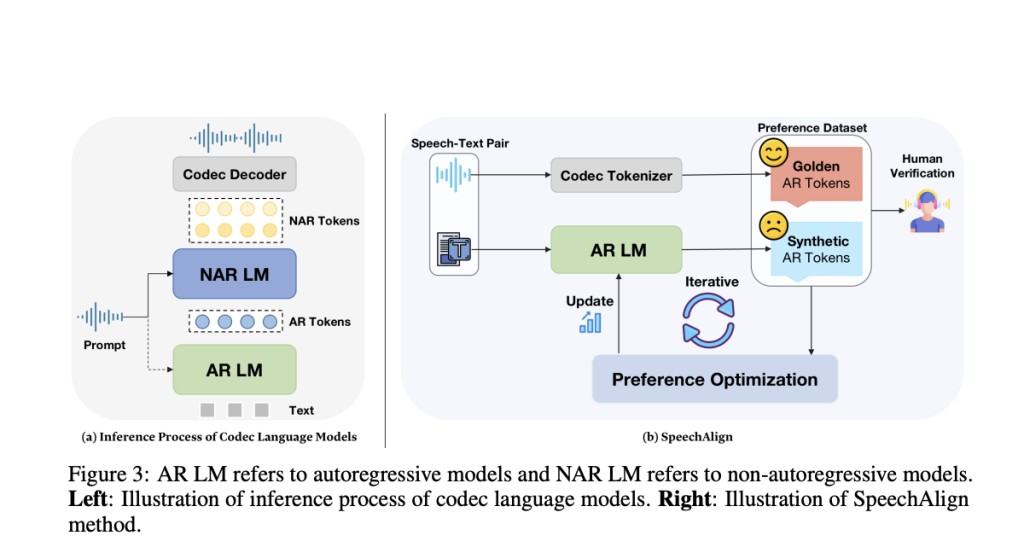Speech synthesis has greatly progressed in technological advancements, reflecting the human quest for machines that speak like us. As we stride into an era where interactions with digital assistants and conversational agents become commonplace, the demand for speech that echoes the naturalness and expressiveness of human communication has never been more critical. The core of this challenge lies in synthesizing speech that sounds human-like and aligns with individuals’ nuanced preferences towards speech, such as tone, pace, and emotional conveyance.
A team of researchers at Fudan University has developed SpeechAlign, an innovative framework that targets the heart of speech synthesis, aligning generated speech with human preferences. Unlike traditional models prioritizing technical accuracy, SpeechAlign introduces a great shift by directly incorporating human feedback into speech generation. This feedback loop ensures that the speech produced is technically sound and resonates on a human level.
SpeechAlign distinguishes itself through its systematic approach to learning from human feedback. It meticulously constructs a dataset where preferred speech patterns, or golden tokens, are placed alongside less preferred, synthetic ones. This comparative dataset is the foundation for a series of optimization processes that iteratively refine the speech model. Each iteration is a step towards a model that better understands and replicates human speech preferences, leveraging objective metrics and subjective human evaluations to gauge success.
A comprehensive suite of evaluations from subjective assessments, where human listeners rated the naturalness and quality of speech to objective measurements like Word Error Rate (WER) and Speaker Similarity (SIM), SpeechAlign demonstrated its prowess. Models optimized with SpeechAlign achieved WER improvements, with reductions up to 0.8 compared to baseline models and enhancements in Speaker Similarity scores, touching the 0.90 mark. These metrics signify technical advancements and indicate a closer mimicry of the human voice and its diverse nuances.
SpeechAlign showcased its versatility across different model sizes and datasets. It proved that its methodology is robust enough to enhance smaller models and can generalize its improvements to unseen speakers. This capability is vital for deploying speech synthesis technologies in diverse scenarios, ensuring that the benefits of SpeechAlign can be widespread and not confined to specific cases or datasets.
Research Snapshot
In conclusion, the SpeechAlign study tackles the pivotal challenge of aligning synthesized speech with human preferences, a gap that traditional models have struggled to bridge. The methodology innovatively incorporates human feedback into an iterative self-improvement strategy. It fine-tunes speech models with a nuanced understanding of human preferences and quantitatively improves upon crucial metrics like WER and SIM. These results underscore the effectiveness of SpeechAlign in enhancing the naturalness and expressiveness of synthesized speech.
Check out the Paper and Github. All credit for this research goes to the researchers of this project. Also, don’t forget to follow us on Twitter. Join our Telegram Channel, Discord Channel, and LinkedIn Group.
If you like our work, you will love our newsletter..
Don’t Forget to join our 40k+ ML SubReddit
The post SpeechAlign: Transforming Speech Synthesis with Human Feedback for Enhanced Naturalness and Expressiveness in Technological Interactions appeared first on MarkTechPost.
Source: Read MoreÂ



